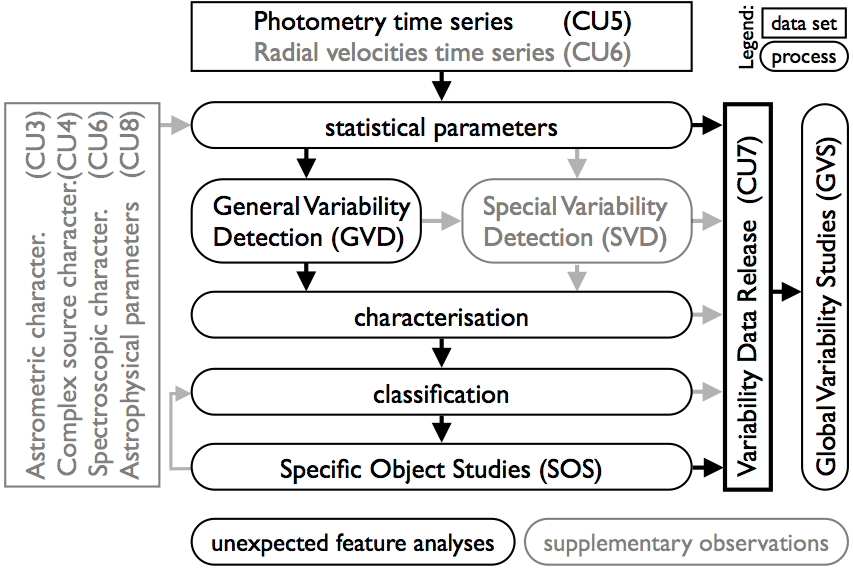6.1 Introduction
Author(s): Laurent Eyer
The coordination effort of the variability processing and analysis is large: the CU7/DPCG group includes about 80 active members spread over 20 institutes mostly in Europe.
CU7 is responsible for the variability analysis of over a billion celestial sources. In particular the definition, design, development, validation and provision of a software package for the data processing of photometrically variable objects.
Data Processing Centre Geneva (DPCG) responsibilities cover all issues related to the computational part of the CU7 analysis. These span: hardware provisioning, including selection, deployment and optimisation of suitable hardware, choosing and developing software architecture, defining data and scientific workflows as well as operational activities such as configuration management, data import, time series reconstruction, storage and processing handling, visualisation and data export.
CU7/DPCG is also responsible for interaction with other DPCs and CUs, software and programming training for the CU7 members, scientific software quality control and management of software and data lifecycle.
Figure 6.1 shows the general processing flow of the variability analyses. Details about the specific data treatment steps are found in Eyer et al. (2017) and will not be repeated here.
The variability content of the Gaia DR1 focusses on a subsample of Cepheids and RR Lyrae stars around the South ecliptic pole, showcasing the performance of the Gaia photometry with respect to variable objects.
